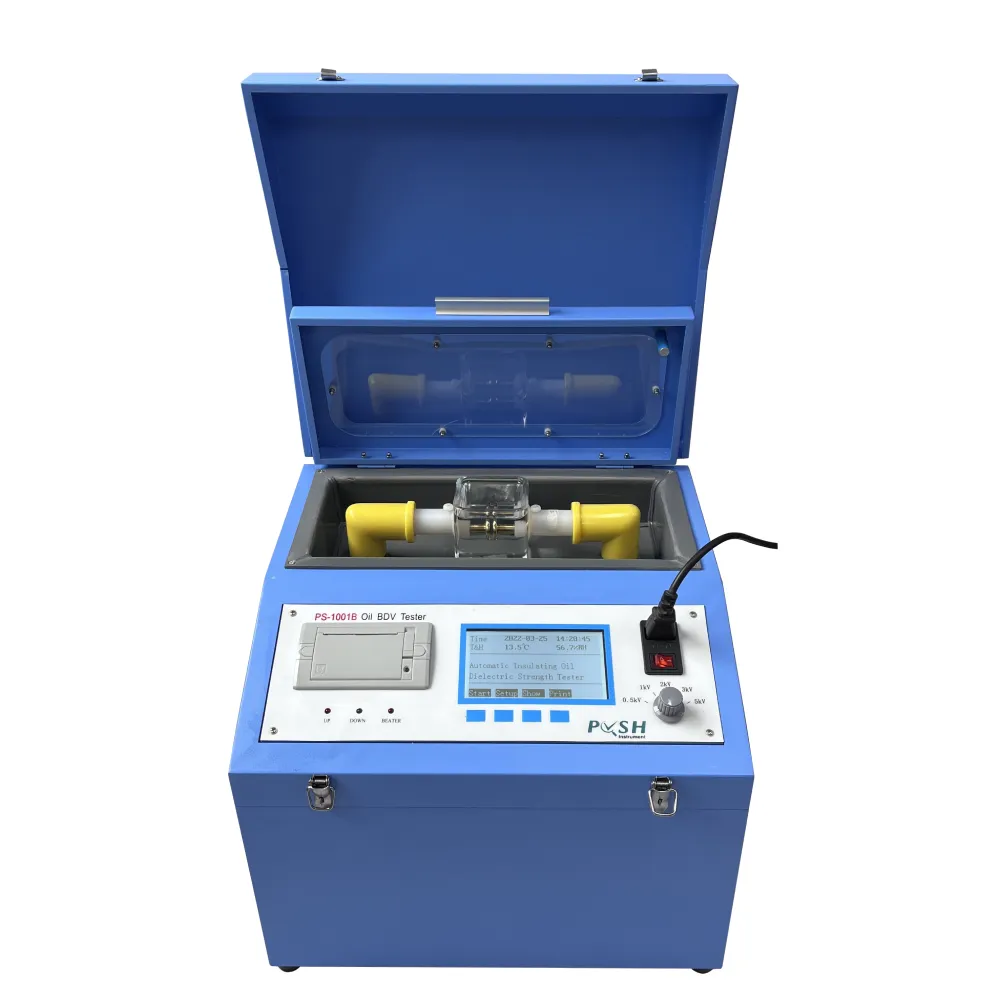TEL:
+86-0312-3189593
 English
English

Telephone:0312-3189593

Email:sales@oil-tester.com
3 月 . 07, 2025 02:16
Back to list
tan delta test of transformer oil
The tan delta test of transformer oil is a pivotal diagnostic instrument used by electrical engineers and specialists in power systems to evaluate the insulation quality of transformer oil. Transformer oil acts not only as a cooling medium but also plays a critical role in the insulation system, ensuring the operational efficiency and safety of transformers. Over time, the quality of transformer oil can degrade due to thermal, mechanical, and electrical stresses, resulting in increased downtime and unexpected failures.
Incorporating real-world experience, one must understand that tan delta values can be affected by several external factors. For instance, an increase in temperature generally leads to a lower viscosity of the oil, which might alter the test readings. Furthermore, older transformers might have higher baseline tan delta values due to naturally aged insulation systems; thus, trending analyses over time are crucial in making informed maintenance decisions. It's also vital to recognize that while a single tan delta test provides a snapshot of the insulation condition, it is the trend analysis over time that reveals the health trajectory of the transformer. Advanced software tools and data analytics play a significant role in predictive modeling, offering reliable predictions about future performance and potential maintenance needs. Trustworthiness in conducting and interpreting tan delta tests is enhanced by adhering to international standards such as IEEE, IEC, and ASTM guidelines. These standards provide benchmarks, ensuring that the tests are conducted under consistent conditions and that results are compared against reliable thresholds. Certified test labs equipped with the latest technology are more likely to deliver precise measurements, reducing the risk of incorrect diagnosis and decision-making. In conclusion, the tan delta test is an essential component of transformer maintenance strategies. Its significance lies in its ability to non-invasively monitor the condition of transformer oil, predict potential failures, and guide proactive maintenance practices. Leveraging expertise, authoritative practices, and trustworthy methodologies, power system professionals can enhance the reliability and efficiency of transformers, thus safeguarding critical infrastructure and ensuring continuous power delivery.


Incorporating real-world experience, one must understand that tan delta values can be affected by several external factors. For instance, an increase in temperature generally leads to a lower viscosity of the oil, which might alter the test readings. Furthermore, older transformers might have higher baseline tan delta values due to naturally aged insulation systems; thus, trending analyses over time are crucial in making informed maintenance decisions. It's also vital to recognize that while a single tan delta test provides a snapshot of the insulation condition, it is the trend analysis over time that reveals the health trajectory of the transformer. Advanced software tools and data analytics play a significant role in predictive modeling, offering reliable predictions about future performance and potential maintenance needs. Trustworthiness in conducting and interpreting tan delta tests is enhanced by adhering to international standards such as IEEE, IEC, and ASTM guidelines. These standards provide benchmarks, ensuring that the tests are conducted under consistent conditions and that results are compared against reliable thresholds. Certified test labs equipped with the latest technology are more likely to deliver precise measurements, reducing the risk of incorrect diagnosis and decision-making. In conclusion, the tan delta test is an essential component of transformer maintenance strategies. Its significance lies in its ability to non-invasively monitor the condition of transformer oil, predict potential failures, and guide proactive maintenance practices. Leveraging expertise, authoritative practices, and trustworthy methodologies, power system professionals can enhance the reliability and efficiency of transformers, thus safeguarding critical infrastructure and ensuring continuous power delivery.
Previous:
Next:
Latest news
-
Differences between open cup flash point tester and closed cup flash point testerNewsOct.31,2024
-
The Reliable Load Tap ChangerNewsOct.23,2024
-
The Essential Guide to Hipot TestersNewsOct.23,2024
-
The Digital Insulation TesterNewsOct.23,2024
-
The Best Earth Loop Impedance Tester for SaleNewsOct.23,2024
-
Tan Delta Tester--The Essential Tool for Electrical Insulation TestingNewsOct.23,2024





